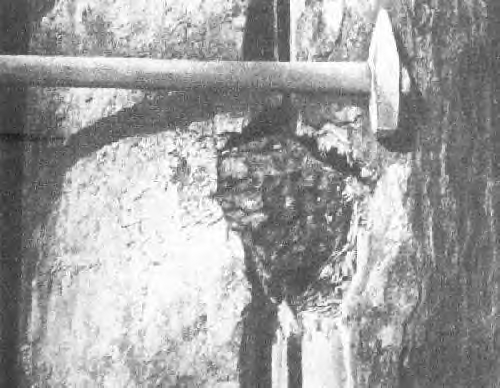 | | | Collecting and preserving meteorites since 1998. |
| |
|  |
|
|  |
The single largest meteorite fall in modern history occurred on February 12th, 1947, at ~10:38am local time. In Primorsky Krai, a remote northeastern province of Russia, eyewitnesses watched dumbstruck as a massive fireball and smoke train rapidly traversed the sky. The flash from the terminal explosion and sonic effects from the meteorites' breaking of the sound barrier and/or subsequent impacts were heard over three hundred kilometers from the site of the fall.
The fragments that reached the ground made no fewer than 120 craters and impact pits. The largest crater measured over 26.5 meters across, and, acording to Krinov, was made by no fewer than eight individual meteorites that all impacted in very close proximity to each other.1
Somewhat paradoxically, the largest meteorites recovered were found in the smaller impact pits. All of the larger meteorite fragments that survived the atmospheric passage to make craters violently shattered upon impacting the frozen ground and bedrock. These destructive impacts produced the tonnes of shrapnel iron meteorite fragments commonly associated with the fall. Jagged metal fragments weighing up to 45kg were found scattered amongst the craters' rubble, laying about the surrounding taiga, and were often found halfway through any trees left standing in the immediate viscinity of the craters.
  2 2
The estimated total weight of the meteorites that survived atmospheric entry ranges from 70 to 100 metric tonnes. The largest recovered individual weighed 1,700 kilograms, and the smallest, per Krinov, weighed a mere 6 milligrams [1, see pg. 131].
1 Krinov, E. L. New Studies of The Sikhote-Alin Meteorite Shower; Meteoritics, volume 6, number 3, page 128.
- http://articles.adsabs.harvard.edu/full/seri/Metic/0006//0000127.000.html
2 Krinov, E. L. The Iron Shower; 1981.
|
| | |
|
